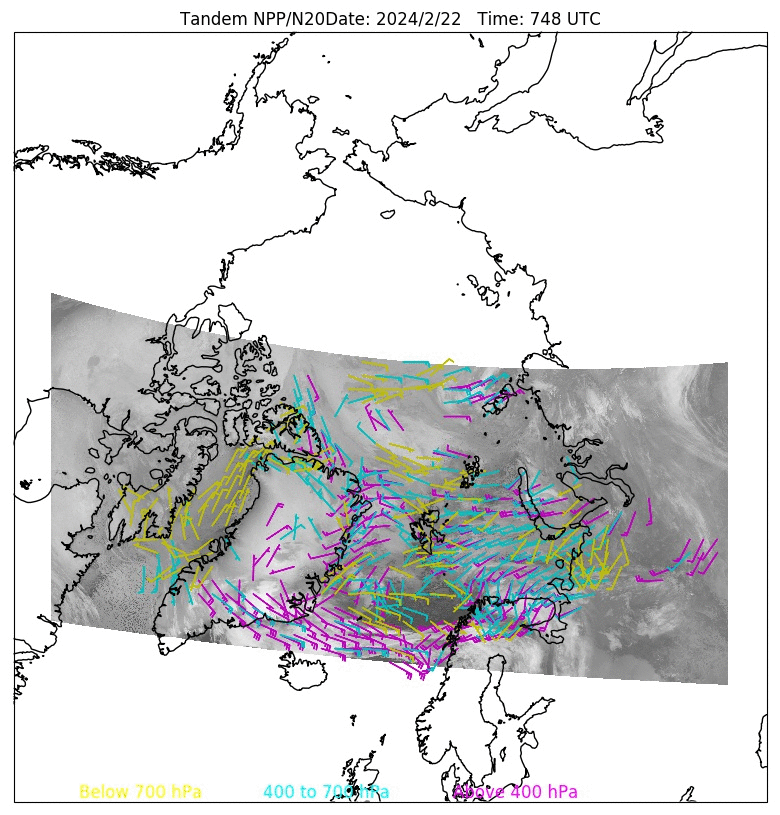CIMSS and JPSS at AMS in 2024: Part I
CIMSS Scientists who work with JPSS data had numerous presentations at the American Meteorological Society’s Annual Meeting held at the end of January in Baltimore. This blog post discusses two poster by Rich Dworak who (along with co-authors) investigated how JPSS data can define winds and ice properties in the Arctic.
Atmospheric Motion Vectors can be computed from polar-orbiting satellites, and these give better spatial resolution over the Poles compared to geostationary data. Additionally, because Suomi-NPP and NOAA-20 have similar orbits, data from multiple satellites can be used in tracking atmospheric features; it is the translation of those features that is used to infer atmospheric motion. (The addition of NOAA-21 to the mix will improve things further) ‘Polar Tandem’ winds in the poster below refer to winds computed using both Suomi-NPP and NOAA-20 data; a better forecast results when such winds are input into a numerical model (NAVGEM in this case). SWIR winds use observations from 2.25 um (that is, M11 on VIIRS) on Suomi-NPP and NOAA-20; these computed low-level winds lead to improved model forecasts as well.
Dworak and (different) collaborators also work on cryosphere products, detailed in the poster below. These operational products combine all-weather AMSR-2 information with high-resolution VIIRS observations of surface ice. In particular this results in better observations and predictions of the sea ice edge.
Satellite winds that are based on this work are available in real time at this link. An example the includes both Suomi-NPP and NOAA-20 data is shown below (0748 UTC on 22 February 2024). These winds were also discussed in this recent blog post.


